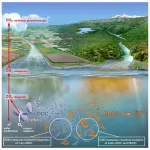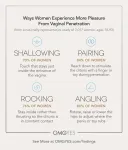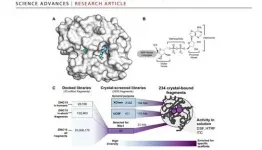(Press-News.org) COVID-19 and hemorrhagic stroke are a deadly combination, increasing the risk of death up to 2.4 times among patients who have this pairing compared to those who only had hemorrhagic strokes, according to a nationwide study led by University of Utah Health scientists. Patients who survived had longer hospital stays, more medical complications, and less favorable outcomes than those who did not have both conditions.
Racial and ethnic minorities and those who were obese or had diabetes were among the most vulnerable.
"This is one of the first studies to document that, in patients with hemorrhagic stroke who have comorbid COVID-19, there is a significantly elevated risk of in-hospital death," says Adam de Havenon, M.D., senior author of the study and an assistant professor of neurology at U of U Health. "This finding warrants additional study and potentially more aggressive treatment of either condition."
The study appears in PLOS ONE.
Recent studies suggest that COVID-19 increases the risk of ischemic strokes, the most common type of stroke, which are caused by blockages in an artery that supplies blood to the brain. However, little is known about the association between COVID-19 and hemorrhagic strokes.
Hemorrhagic strokes are caused by a weakened vessel that ruptures and bleeds into the surrounding brain. There are two types of hemorrhagic strokes: Intracerebral hemorrhage (ICH) is caused by bleeding within the brain tissue itself, while a subarachnoid hemorrhage (SAH) is caused by bleeding from a damaged artery at the surface of the brain.
Accessing a commonly used health care database, de Havenon and colleagues analyzed medical records from 568 hospitals nationwide. They compared hospital admissions for 23,378 patients with hemorrhagic stroke without COVID-19 in 2019 to 771 patients admitted in 2020 with COVID-19 who also had hemorrhagic strokes before or after hospital admission.
The 559 patients with comorbid COVID-19 and ICH had a higher in-hospital death rate (46% vs. 18%), along with longer hospital stays (21 days vs. 10 days) and longer intensive care unit (ICU) stays (16 days vs. 6 days). Only about one in four of these patients had a favorable discharge outcome, meaning they either went home or to a rehabilitation center. In contrast, about half of the 2019 ICH patients had favorable outcomes.
The researchers found a similar pattern among 212 patients with COVID-19/SAH: a higher percentage of in-hospital death (43% vs.15% among controls), longer hospital stays (27 days vs. 13 days), and longer ICU stays (22 days vs. 9 days). Only 31% of these patients had a favorable discharge outcome, compared to 65% among the 2019 control group.
During their hospital stays, both ICH and SAH patients with COVID-19 were more likely to be intubated and have acute coronary syndrome, acute kidney failure, or pulmonary embolisms than those who had hemorrhagic stroke only.
Nearly half of patients admitted with COVID-19 did not have ICH or SAH strokes until after they were admitted to hospital. The reason is unclear, but patients admitted with COVID-19 were more likely to receive anticoagulation drugs, which could increase the risk of hemorrhagic stroke, according to de Havenon. The researchers plan to investigate this phenomenon in future studies.
While Whites accounted for more than half of the hemorrhagic strokes in the 2019 control group, Blacks, Hispanics, Asians, and other ethnic groups accounted for the majority of strokes among those who also had COVID-19. The researchers plan to follow up on these findings as well.
Among the study's limitations was differences in hospital billing codes for ICH and SAH, which can make it hard to differentiate between them. The study also didn't include information on anticoagulation drug dosage, which could account for some of the strokes.
For doctors, this study provides an opportunity to tailor treatments for patients with hemorrhagic strokes who have COVID-19 as a comorbid disease, says Ramesh Grandhi, M.D., a neurosurgeon at U of U Health.
"Sometimes, as doctors, we see things on a day-to-day, patient-to patient level that doesn't help us very much," Grandhi says. "But seeing a larger data set across a vast hospital network really allows us to see that these aren't just isolated incidences. These are institutional trends throughout the country that could help us guide treatment and develop new interventions that lead to better outcomes for these patients."
INFORMATION:
In addition to Drs. de Havenon and Grandhi, U of U Health scientists Alen Delic and Jennifer A. Frontera contributed to this research. Other contributors included researchers from the Naval Medical Center in San Diego, University of Washington, New York University, Washington University in St. Louis. and Vizient, Inc.
The study, "Impact of COVID-19 on the Hospitalization, Treatment, and outcomes of Intracerebral Hemorrhage and Subarachnoid Hemorrhage in the United States," appears in PLOS ONE. The National Institute of Neurological Disorders and Stroke supported this research.
When wastewater from villages and cities flows into rivers and lakes, large quantities of fats, proteins, sugars and other carbon-containing, organic substances wind up in nature together with the fecal matter. These organic substances are broken down by bacteria that consume oxygen. The larger the volume of wastewater, the better the bacteria thrive. This, however, means the oxygen content of the water continues to decrease until finally the fish, muscles or worms literally run out of air. This has created low-oxygen death zones in many rivers and lakes around the world.
No gold standard for measurements until now
In order to measure how heavily the waters are polluted with organic matter from feces, government ...
Grave goods, such as stone tools, have revealed that Neolithic farmers had different work-related activities for men and women.
Researchers at the University of York analysed 400 stone objects found in graves at cemetery sites across Europe and noted there were differences in size, weight, and raw material dependent on whether the body was a male or a female.
Archaeologists had previously thought that polished stone tools in this period were used for woodworking, but analysis now shows a much wider range of tasks, with different activities for men and women.
The tools found in female graves were most likely used for the working of animal skins and hide, and tools for the men were associated with hunting ...
Researchers at HSE University have identified the genes that play a crucial role in breast cancer metastasis. The results of the study were published in the journal PLOS ONE.
Every human cell includes a huge number of various molecules: DNA, RNA, proteins, etc. One of the essential classes of molecules that interact with each other are microRNAs, along with their target genes and transcription factors. MicroRNAs are small molecules, which can directly reduce the concentration (expression) of target genes, while transcription factors are able to both increase and reduce the expression of ...
A new state-by-state analysis shows a statistical association between high adherence to mask wearing and reduced rates of COVID-19 in the U.S. Charlie Fischer and colleagues at the Boston University School of Public Health in Massachusetts present these findings in the open-access journal PLOS ONE on April 14.
During the COVID-19 pandemic, different states have enacted different policies on mask wearing, with some states having no mask requirements and others requiring masks in all public spaces. Understanding the link between mask wearing and COVID-19 rates could help inform policies to mitigate stress on healthcare systems, economic instability, and death.
To help clarify the effects of mask wearing, Fischer and colleagues examined publicly ...
Combining immune-boosting drugs with radiation and surgery increased the survival and anticancer immune response in mouse models of mesothelioma in preclinical research by Princess Margaret Cancer Centre researchers.
In a series of exciting experiments using mouse models of mesothelioma cancer, researchers found that combining two immunotherapy drugs can amplify the anti-tumour response first triggered by a short course of radiation, conferring long-lasting control and resistance against cancer. These response rates are improved further by adding surgery to remove the remaining tumour.
Better treatments are urgently needed for mesothelioma patients, as ...
INDIANAPOLIS, IN AND BERKELEY, CA (April 14, 2021) - Researchers from Indiana University School of Medicine and OMGYES have conducted the first-ever, large-scale, nationally representative study focused on women's techniques for increasing their own pleasure from vaginal penetration. The findings, published today in the scientific journal, PLOS ONE, identify and name four distinct methods: Angling, Pairing, Rocking and Shallowing.
The research was led by Dr. Devon J. Hensel, Associate Professor of Research at Indiana University School of Medicine, and Dr. Christiana von Hippel, an OMGYES Research Scientist.
"For the first time, we have ...
Berkeley -- Engineers at the University of California, Berkeley, have created a tiny wireless implant that can provide real-time measurements of tissue oxygen levels deep underneath the skin. The device, which is smaller than the average ladybug and powered by ultrasound waves, could help doctors monitor the health of transplanted organs or tissue and provide an early warning of potential transplant failure.
The technology, created in collaboration with physicians at the University of California, San Francisco, also paves the way for the creation of a variety of miniaturized sensors that could track other key biochemical markers in the body, ...
New research published in Science Advances provides a template for how to develop directly-acting antivirals with novel modes of action, that would combat COVID-19 by suppressing the SARS-CoV-2 viral infection. The study focused on the macrodomain part of the Nsp3 gene product that SARS-CoV-2 uses to suppress the host cell's natural antiviral response. This part of the virus's machinery, also known as Mac1, is essential for its reproduction: previous studies have shown that viruses that lack it cannot replicate in human cells, suggesting that blocking ...
"Family clustering is a confirmed phenomenon associated with Covid-19, and harrowing stories of this disease ravaging families continue to be reported," a new article explains in the March-April issue of the Hastings Center Report. In one extreme example, 28 extended family members in California reportedly tested positive for Covid-19. Two of the family members who quarantined together required hospitalization, and one of them died from the infection. In family clustering cases, multiple loved ones may suffer from the symptoms of Covid-19 and be hospitalized, in quarantine, or recovering; and family ...
The slurred speech, poor coordination, and sedative effects of drinking too much alcohol may actually be caused by the breakdown of alcohol products produced in the brain, not in the liver as scientists currently think. That is the finding of a new study led by researchers from the University of Maryland School of Medicine (UMSOM) and the National Institute on Alcohol Abuse and Alcoholism. It was published recently in the journal Nature Metabolism and provides new insights into how alcohol may affect the brain and the potential for new treatments to treat alcohol misuse.
It is well known that the liver is the major organ ...




